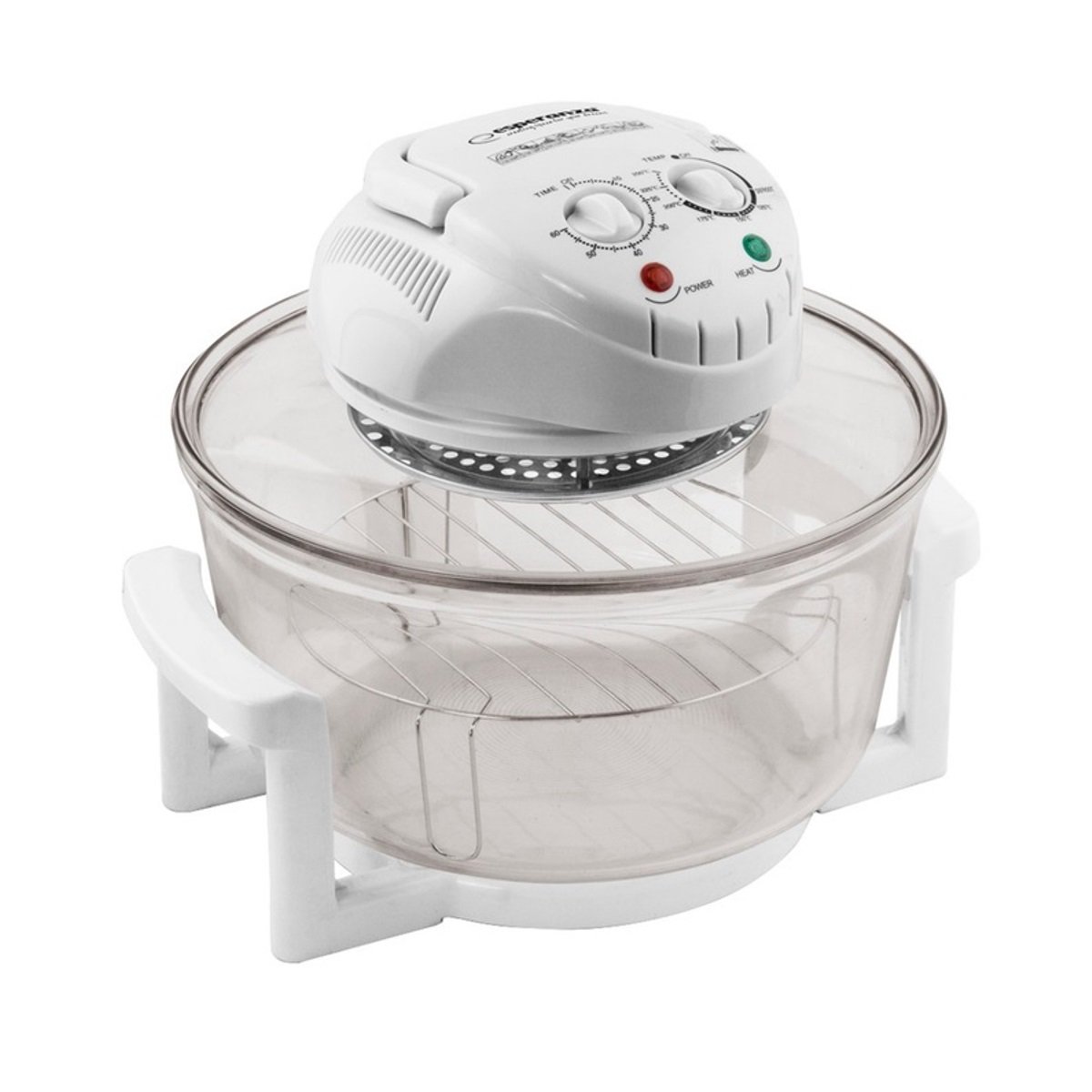
In the world of kitchen appliances, two contenders have been battling it out for the title of most efficient and cost-effective cooking companion: the air fryer vs halogen oven. Both promise healthier cooking with less oil, but which one is truly the better choice?
As someone who's spent countless hours experimenting with both, I can tell you that the debate isn't as straightforward as it might seem.
This in-depth look at the air fryer vs halogen oven debate will explore the pros and cons of each, compare their performance across various cooking tasks, and help you decide which one might be the best fit for your kitchen. Let's begin!
Jump to:
Understanding the Basics: Air Fryer vs Halogen Oven
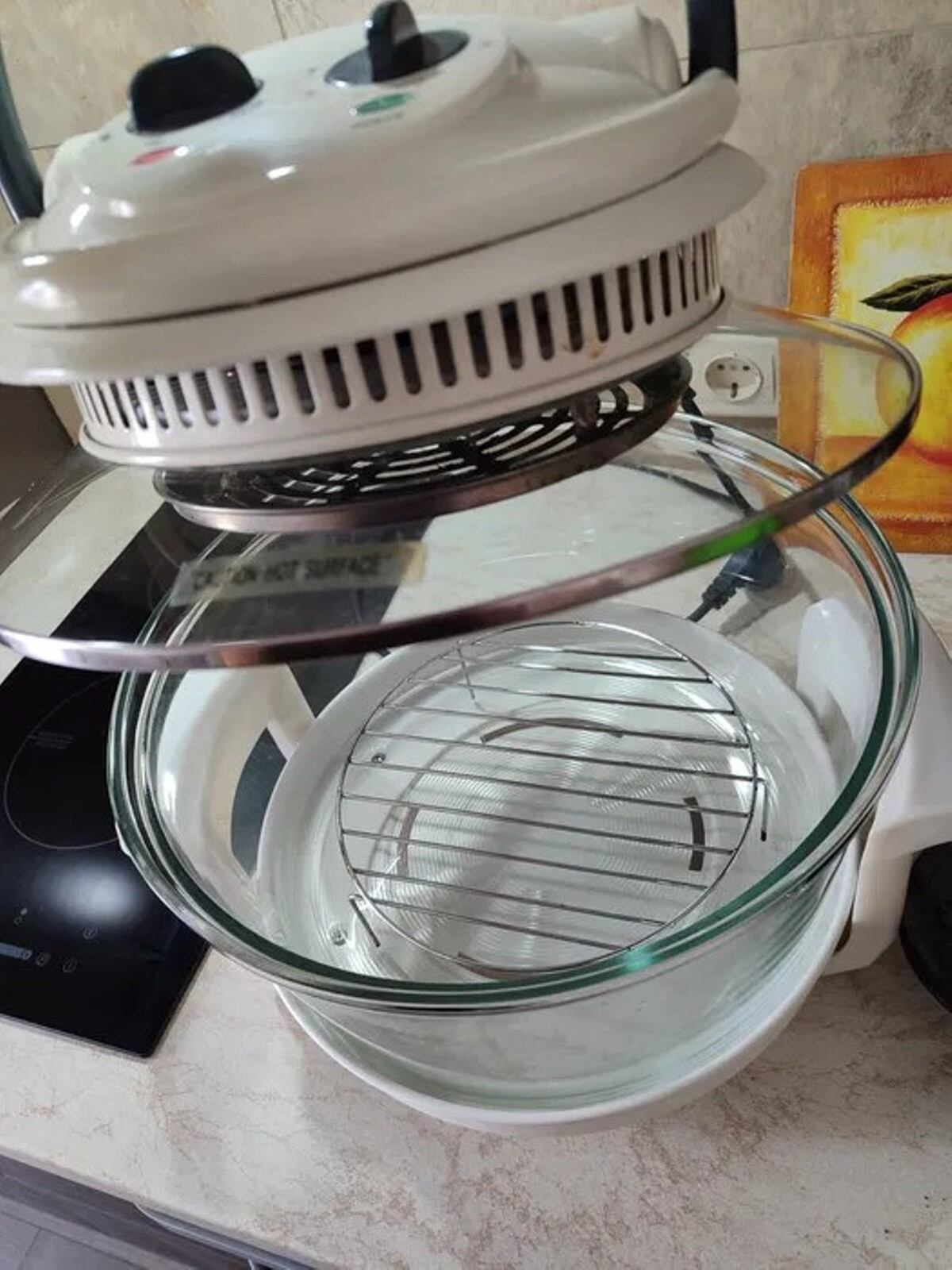
Before we dive into the nitty-gritty of performance and efficiency, let's break down what exactly these appliances are and how they work.
What is an Air Fryer?
An air fryer is essentially a compact convection oven. It uses a heating element and a powerful fan rapidly circulating hot air around food at high speeds. This rapid air circulation creates a crispy exterior on foods, mimicking the effect of deep frying but with significantly less oil.
Key features of air fryers include:
- Compact size, perfect for small kitchens.
- Typically basket-style design for easy food handling.
- Temperature control and timer settings.
- Requires little to no oil for cooking.
What is a Halogen Oven?
Halogen ovens cook food faster than traditional ovens, using a combination of halogen bulbs and a fan to circulate hot air around the food. The oven usually consists of a large glass bowl with a lid that houses the heating element and controls.
Key features of halogen ovens include:
- Larger capacity compared to most air fryers.
- Transparent bowl allows you to monitor the cooking progress.
- Often comes with various accessories for different cooking methods.
- Can perform a wider range of cooking functions, including roasting, grilling, and even baking.
The Core Differences
While both appliances use hot air circulation for cooking, some fundamental differences exist:
- Heat Source: Air fryers use a heating element, while halogen ovens use a halogen bulb.
- Cooking Space: Halogen ovens typically offer more cooking space and visibility.
- Versatility: Halogen ovens often come with more accessories and cooking options out of the box.
- Size and Storage: Air fryers are generally more compact and easier to store.
Also read: How Do Air Fryers Cook So Fast: Secrets To Speedy Cooking!
Performance Face-Off: Cooking Capabilities

When it comes to the air fryer vs. halogen oven battle, performance is key. I've put both appliances through their paces, cooking a variety of dishes to see how they stack up. Let's break it down by some popular cooking tasks:
Frying and Crisping
Air Fryer: This is where air fryers truly shine. They consistently produced crispier results, especially for items like french fries and chicken wings. The concentrated heat and powerful fan create that coveted crispy exterior while keeping the inside moist.
Halogen Oven: While halogen ovens can certainly crisp food, they don't quite match the air fryer's performance in this area. However, they do a decent job and can handle larger quantities at once.
Roasting
Air Fryer: Smaller air fryers can struggle with larger items like whole chickens. However, models like the Ninja Foodi Health Grill and Air fryer have larger capacities and can roast quite effectively.
Halogen Oven: This is where halogen ovens often have an edge. Their larger capacity and even heat distribution make them excellent for roasting meats and vegetables.
Baking
Air Fryer: While not their primary function, many air fryers can bake small items like muffins or personal-sized pizzas quite well.
Halogen Oven: The halogen oven's larger capacity and more oven-like design make it better suited for baking.
Reheating
Both appliances excel at reheating leftovers, bringing back some crispness to foods that would otherwise become soggy in a microwave. However, the air fryer's smaller size means it heats up faster, making it slightly more convenient for quick reheating tasks.
Energy Efficiency and Running Costs
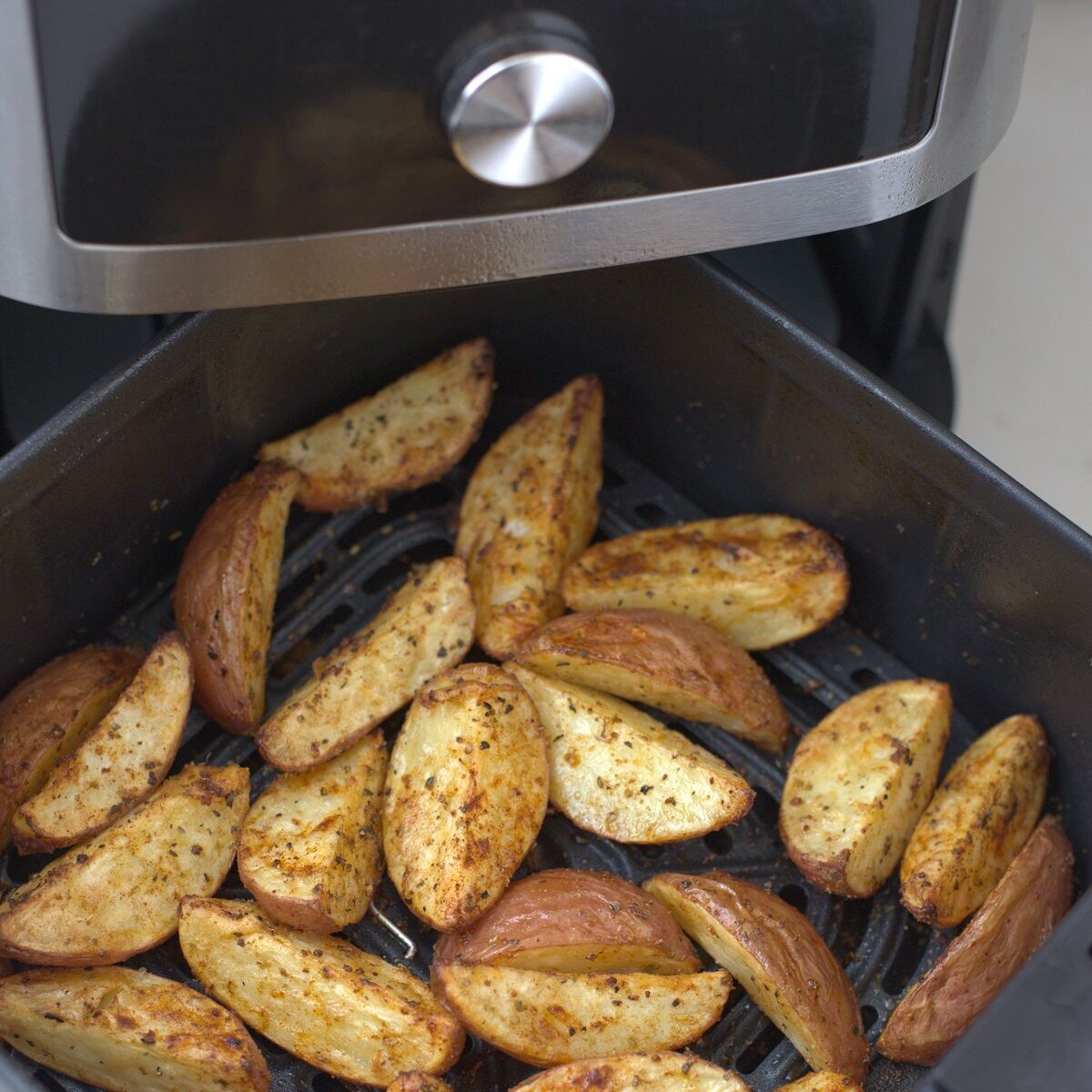
When it comes to kitchen appliances, performance isn't the only consideration. Efficiency and running costs play a significant role in our purchasing decisions. So how do air fryers and halogen ovens stack up in this department?
Power Consumption
Air Fryers: Most air fryers range from 1,000 to 1,700 watts. The Instant Vortex Slim XL 6QT uses about 1,700 watts. Smaller models like the Instant Vortex 2QT Mini Air Fryer typically use around 1,300 watts.
Halogen Ovens: These generally use between 1,200 to 1,400 watts.
Conventional Ovens: For comparison, a standard electric oven typically uses around 2,000 to 2,200 watts.
At first glance, it might seem like air fryers and halogen ovens are neck and neck in terms of power consumption. However, the real efficiency comes from their faster cooking times.
Energy Usage in Practice
To get a real-world perspective, I monitored the energy usage of both appliances while cooking a variety of dishes. Here's what I found:
- Cooking a batch of french fries:
- Air Fryer: Used approximately 0.35 kWh.
- Halogen Oven: Used approximately 0.40 kWh.
- Roasting a whole chicken:
- Air Fryer: Used approximately 0.85 kWh.
- Halogen Oven: Used approximately 0.80 kWh.
- Reheating leftovers:
- Air Fryer: Used approximately 0.15 kWh.
- Halogen Oven: Used approximately 0.20 kWh.
As you can see, the energy usage is quite similar, with air fryers having a slight edge for smaller, quicker cooking tasks, and halogen ovens performing better for larger items. Significant energy savings can be achieved by using an air fryer compared to an oven or hob.
On a similar note: How Many Watts Does an Air Fryer Use? Energy Facts Revealed
Cost Implications
According to Beeco Green, halogen ovens can consume up to 75% less electricity compared to conventional ovens.
Let's break down the potential cost savings. Assuming an average electricity rate of $0.14 per kWh:
- Cooking french fries twice a week for a year:
- Air Fryer: Approximately $5.10 in electricity costs.
- Halogen Oven: Approximately $5.82 in electricity costs.
- Conventional Oven: Approximately $10.92 in electricity costs.
- Roasting a chicken once a week for a year:
- Air Fryer: Approximately $6.19 in electricity costs.
- Halogen Oven: Approximately $5.82 in electricity costs.
- Conventional Oven: Approximately $16.38 in electricity costs.
While these differences might seem small on a per-use basis, they can add up over time, especially when you consider the variety of dishes you might prepare in these appliances.
Initial Cost Considerations
It's worth noting that the initial purchase price can vary significantly between air fryers and halogen ovens. While you can find budget options for both, air fryers tend to be more expensive on average.
When considering the long-term value, it's important to factor in both the initial cost and the ongoing energy expenses. While halogen ovens might have a lower entry point, the energy efficiency of air fryers could balance out the cost over time, especially if you opt for a budget-friendly model.
Practical Considerations: Ease of Use, Cleaning, and Versatility
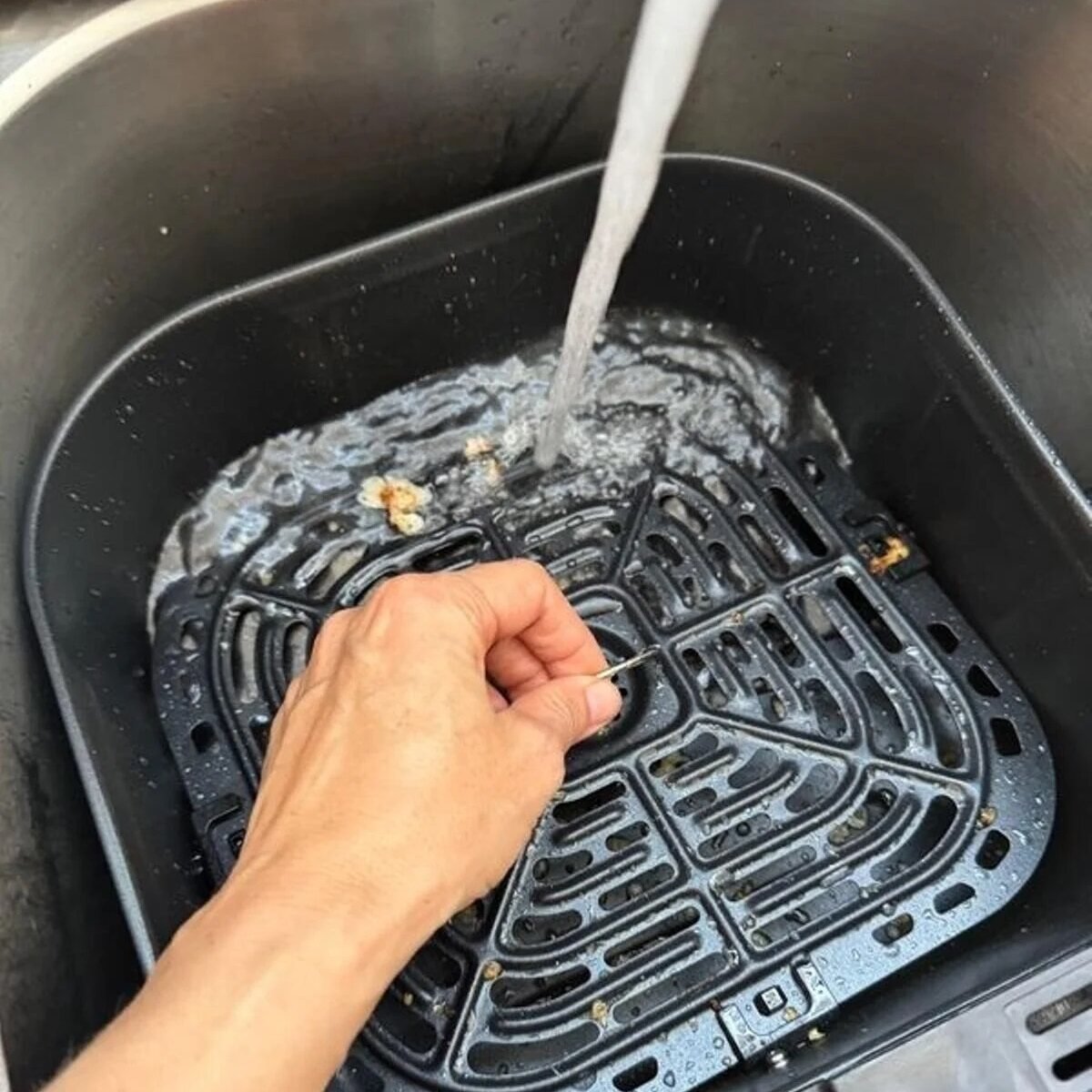
When it comes to kitchen appliances, performance and efficiency are crucial, but they're not the whole story. The choice also hinges on practical considerations that affect your day-to-day use. Let's break down some of these key factors:
Ease of Use
Air Fryers:
- Simple controls, often with preset functions for popular foods.
- Compact size makes them easy to move and store.
- Pull-out basket design allows for easy food checking and shaking.
Halogen Ovens:
- Generally, have simple dial controls for temperature and time.
- Transparent bowl allows you to monitor cooking progress without opening.
- Larger size can make them more cumbersome to move.
In my experience, both appliances are relatively straightforward to use. However, air fryers often have a slight edge in user-friendliness, especially for quick, everyday cooking tasks.
Related: How To Use Air Fryer Oven: Your Guide for Perfect Results
Cleaning and Maintenance
Air Fryers:
- Many models have dishwasher-safe parts.
- Non-stick surfaces make cleaning easier.
- The fryer basket and tray can usually be washed in warm, soapy water.
Halogen Ovens:
- Glass bowl and metal rack are usually dishwasher-safe.
- The heating element might require occasional wiping down.
- Cleaning the inside of the glass bowl can be a bit tricky due to its shape.
Both appliances are relatively easy to clean, with air fryers having a slight advantage due to their smaller size and often dishwasher-safe components. However, the halogen oven's glass bowl allows for easier monitoring of food splatters and spills, potentially making cleaning less frequent.
Versatility
Air Fryers:
- Excel at frying, crisping, and roasting small to medium-sized portions.
- Some models offer additional accessories for grilling, baking, and even dehydrating.
- Might not be suitable for larger families or those who frequently cook large quantities.
Also read: Air Fryer Hacks: Genius Ways to Use Your Air Fryer
Halogen Ovens:
- Offer a wider range of cooking functions out of the box, including roasting, baking, grilling, steaming, and reheating.
- Larger capacity makes them suitable for families and batch cooking.
- Can be bulky for storing, especially with multiple accessories.
When it comes to versatility, halogen ovens have a clear advantage. They can handle a wider range of cooking tasks and accommodate larger quantities, making them a more versatile addition to your kitchen. However, if you prioritize frying and crisping and have limited storage space, an air fryer might still be a good option.
Making the Decision: Which One Is Right for You?
So, we've delved into the performance, efficiency, and practical aspects of air fryers and halogen ovens. But the ultimate question remains: which one is the right choice for your kitchen?
Choose an air fryer if:
- You prioritize crispy, fried-like results with minimal oil.
- You have a small household or often cook for one or two people.
- You have limited counter space and need a compact appliance.
- You're on a tight budget and looking for an affordable option.
Choose a halogen oven if:
- You value versatility and the ability to cook a wider variety of dishes.
- You have a larger family or frequently cook for guests.
- You prioritize even cooking and larger cooking capacity.
- You're comfortable with a slightly larger appliance.
Both appliances offer significant advantages over conventional ovens in terms of speed, efficiency, and healthier cooking. Consider what matters most to you and weigh the pros and cons carefully before making your decision.
Don't miss out! Also see: How To Air Fry In Your Convection Oven? 5 Easy Steps
Frequently Asked Questions
Both can cook food evenly, but air fryers typically provide a more consistent crispiness due to the rapid air circulation.
Air fryers and mini convection ovens both use convection heat to cook food, but air fryers are designed for faster cooking with a focus on crispiness.
An air fryer cooks food faster with a crispy finish due to its rapid air circulation, while a traditional oven uses a more gradual and even heating method.
Conclusion
The air fryer versus halogen oven debate boils down to personal preferences and cooking styles. An air fryer excels at producing crispy, fried-like results with minimal oil and are perfect for small households or quick meals.
A halogen oven compared to air fryers and ovens offer greater versatility, handling a wider range of cooking tasks, accommodating larger quantities, and often coming with more accessories.
Both appliances are energy-efficient alternatives to conventional ovens, significantly reducing cooking times and potentially lowering energy bills. When making your decision, carefully consider your needs, cooking habits, budget, and the factors discussed above to determine which appliance aligns best with your cooking needs. Good luck!


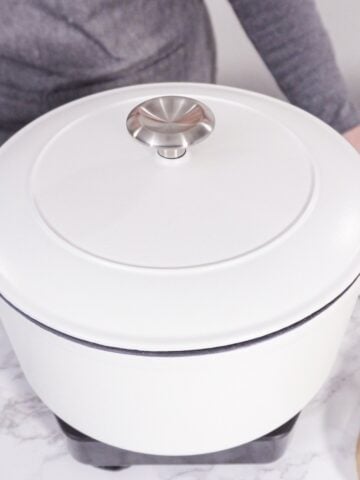



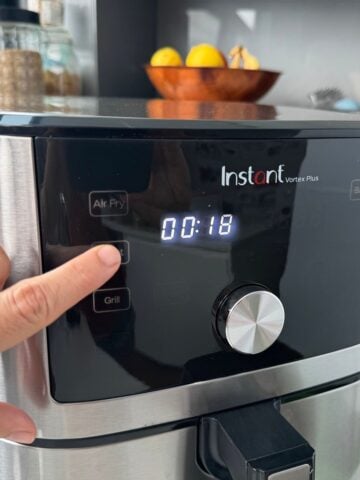
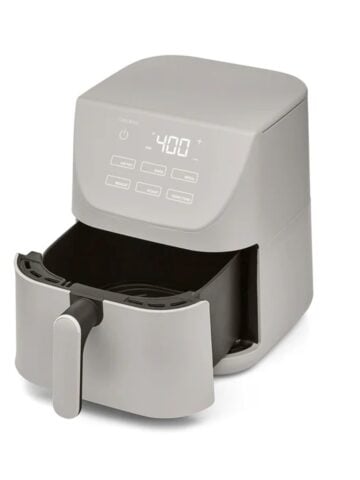
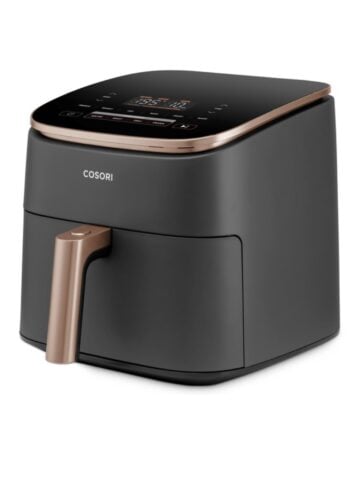

Donna Wilson
Appreciate all your advice. Helped me decide on halogen. I consider glass safer to cook with. I realise food is only in plastic/silicone containers for short time, but for children's health. I try to avoid contact when possible. So many chemicals surround us.